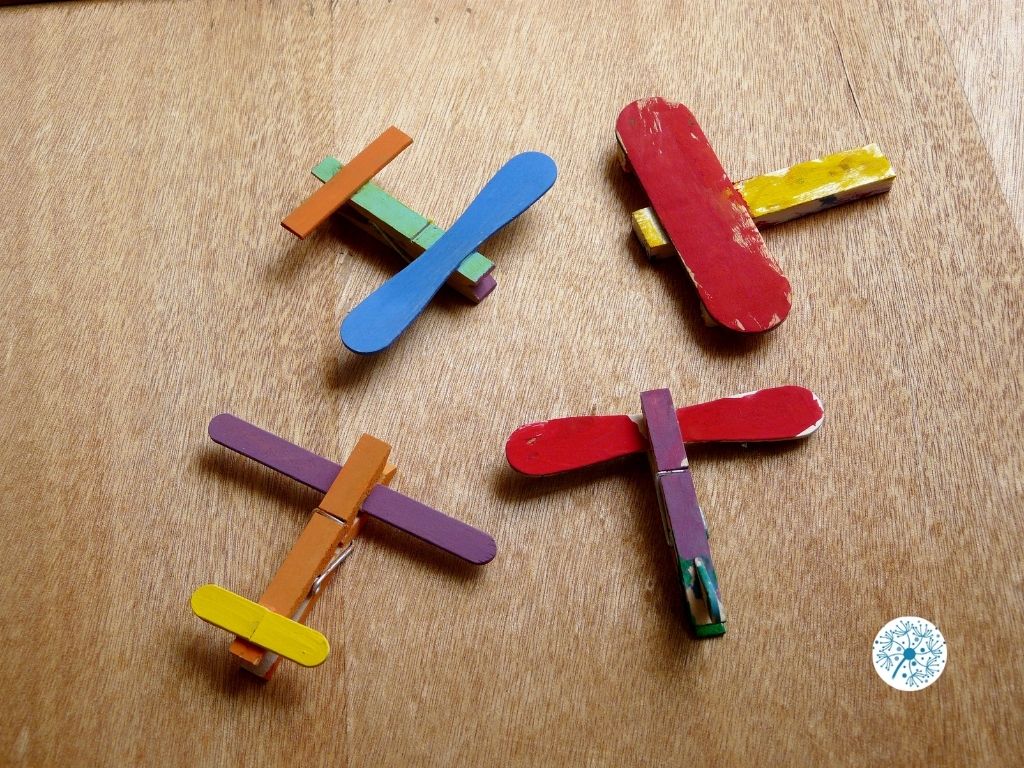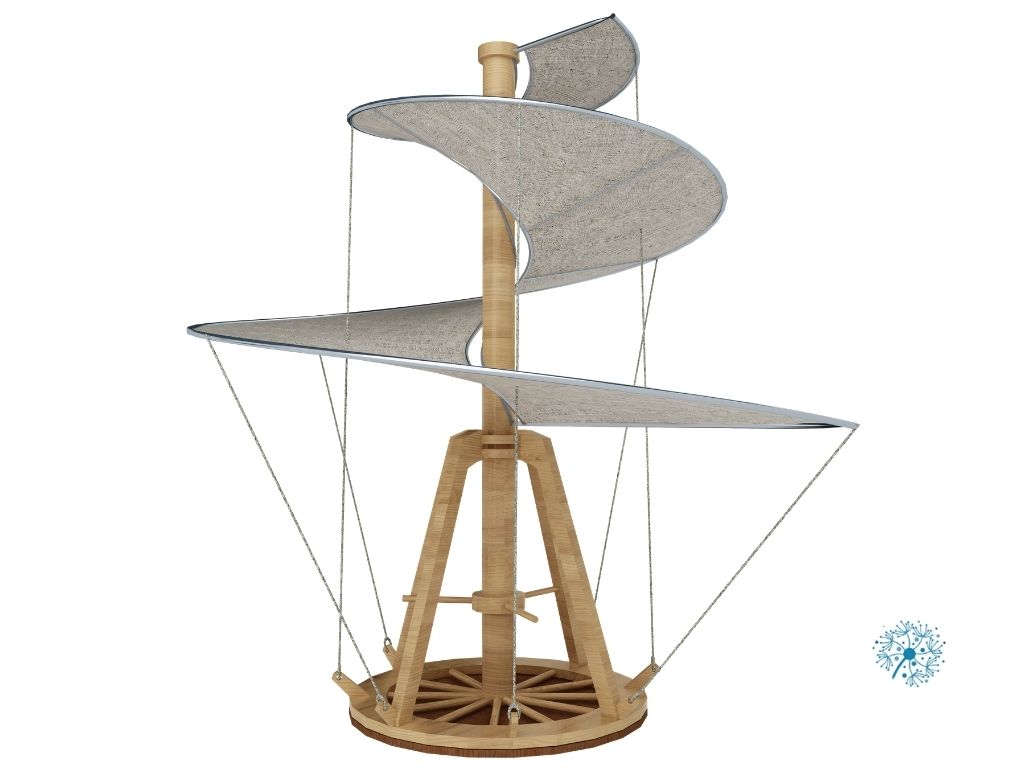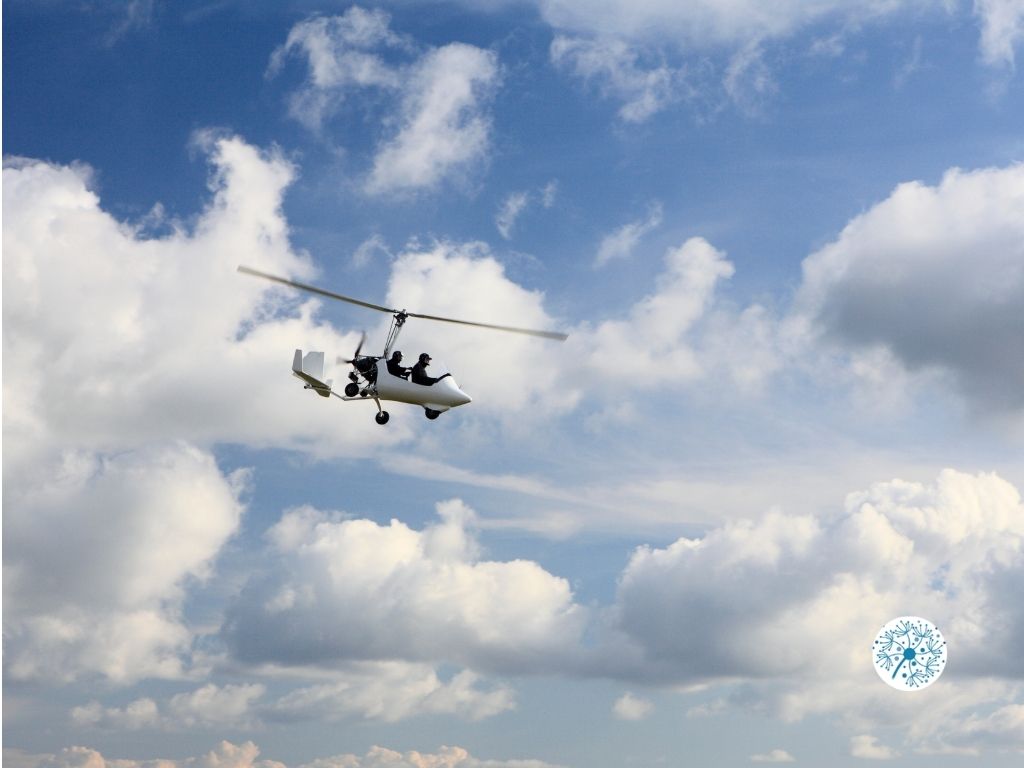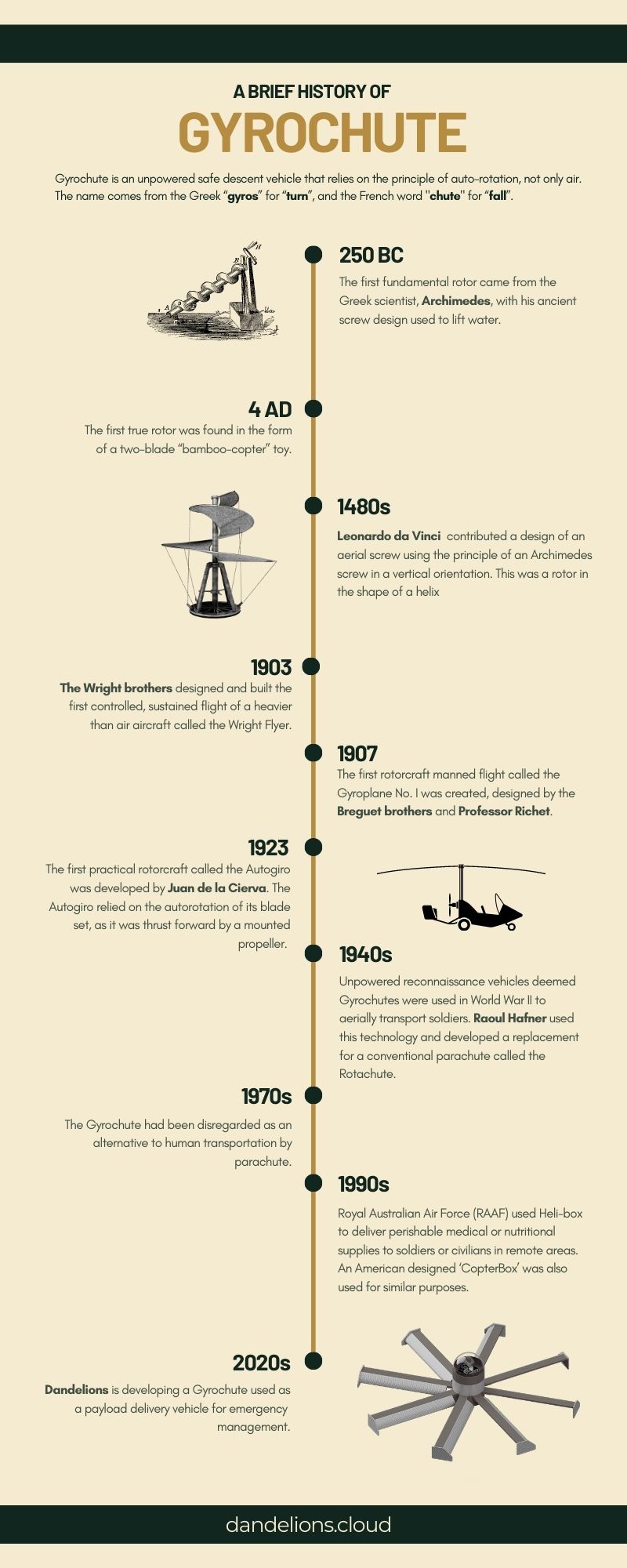The Wright brothers — Orville and Wilbur — were two American aviation pioneers generally credited with inventing, building, and flying the world's first successful motor-operated airplane.
Did you know that the brothers' flying obsession was inspired by a toy?
In 1878, when the brothers were youngsters, their father returned home one day with a gift that he tossed into the air. “Instead of falling to the floor, as we expected,” the brothers recalled in a 1908 magazine article, “it flew across the room till it struck the ceiling, where it fluttered awhile, and finally sank to the floor.” The model helicopter made of cork, bamboo and paper and powered by a rubber band mesmerized the boys and sparked their passion for aviation.

Just like the Wright brothers, we were also inspired by a toy. A two-blade "bamboo-copter" toy inspired us to create an air-deployable infrastructure called the Gyrochute that spins as it reaches the ground.
So, what is gyrochute?
What Is Gyrochute?
The gyrochute represents an innovative replacement to the parachute (an ancient invention dating back to the Renaissance, specifically Leonardo da Vinci in 1485).
Gyrochute is an unpowered safe descent vehicle that relies on the principle of auto-rotation, not only air resistance. The name comes from the Greek "gyros" for "turn" and the French word "chute" for "fall". This elegantly describes the nature of the technology.
History of Gyrochute
The Gyrochute invention has a long history that dated from the 200 BC.
It all began with a Greek scientist named Archimedes. The first fundamental rotor came from him, with his ancient screw design used to lift water.
In the 4th century, the Chinese found the first true rotor in the form of a two-blade "bamboo-copter" toy. Subsequently, the Europeans came upon the four-bladed toys in the 14th century.
Leonardo da Vinci also contributed to designing an aerial screw driven by humans in the 15th century.

Before rotors were used to propel the first planes in the late 19th century, they were used to move great ships across the world's oceans. The first controlled, sustained flight of a heavier than air aircraft was the Wright flyer in 1903, designed and built by the toy-inspired Wright brothers. However, the first manned flight of a rotorcraft wasn't until 1907 by the Gyroplane No. I designed by the Breguet brothers and Professor Richet.
Fixed-wing aircraft continued rapid development with the beginning of the World Wars. Simultaneously, the first practical rotorcraft wasn't developed until 1923 by Juan de la Cierva, who named his invention the Autogiro. The Autogiro relied on its blade set's autorotation as it was thrust forward by a mounted propeller.

These powered gyrocopters were primarily used in the wars as reconnaissance vehicles. However, when unpowered, they could be considered as Gyrochutes for soldier deployment. A famous example of this particular technology is the Hafner Rotachute, which was developed in the early 1940s to replace a conventional parachute. Another unique example is the Brooks Gyrochute, fondly remembered as part of Vancouver history for its eccentric inventor and the multiple spectacles afforded to the local population in 1944.
By the 1970s, the Gyrochute had been written off as an alternative to human transportation by parachute, with tests conducted by the US military in 1952 and an 'X-plane' developed by the Bensen Aircraft Corporation starting in 1968. The X-25 was a controlled descent vehicle for aircrew forced to abandon aircraft. However, this was ironically abandoned after the Vietnam War.
The last practical use of the Gyrochute was in the Royal Australian Air Force (RAAF), with the 'Heli-box' used to deliver perishable medical or nutritional supplies to soldiers or civilians in remote areas in the 1990s. An American designed 'CopterBox' was also used for similar purposes.
Based on this long history, we are now developing a Gyrochute that can be used for emergency management and payload delivery vehicle.
The Focus of Gyrochute
Why did we choose Gyrochute? Why not... parachute?

Well, the Gyrochute has advantages over the parachute. Its rigid structure allows for long term storage, low maintenance, simple deployment strategies and a long-term life in the field. This all contributes to a simpler logistics chain.
In addition, this structure is also perfect for emergency management, which requires rapid deployment of payloads and reliability in a dangerous, unexpected environment. Emergency management is evolving with greater awareness of the world-changing effects of climate change and the new capabilities afforded to authorities with access to voice over radio communications and video, data, and sensors. Therefore, for areas and infrastructure damaged by a disaster, aerially deployable communication packages are necessary for the response, relief and recovery activities.
As a payload delivery vehicle, the Gyrochute has many potential uses. A promising example is the potential to act as a mass-manufacturable re-entry vehicle for sample return from orbit or space.
Conclusion
Inspiration is all around us. Just like the Wright brothers, a simple item such as a toy can revolutionize our world. We also want to make a difference the way the brothers did.
So, stay tuned for our latest developments here at Dandelions!
See you next time for other Gyrochute series.
Gyrochute Brief History Infographic



